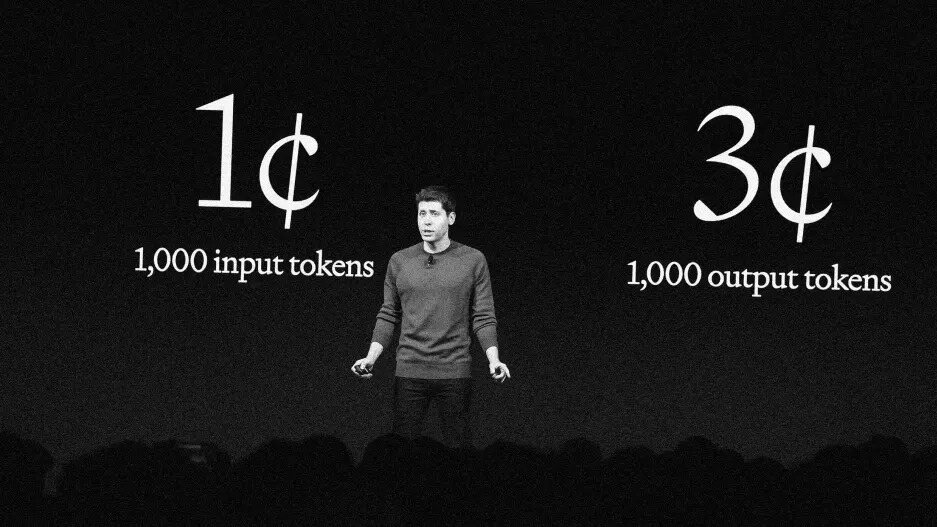- | 8:00 am
OpenAI’s GPT store might not have killed the company—but it could still threaten AI startups
The tumult that came before OpenAI’s grand unraveling highlights the perils of building on someone else’s technology.

In the days and weeks before Sam Altman was unceremoniously fired from OpenAI—then reinstated over the course of a long, confusing weekend—the company was flying high. Its first-ever Dev Day, held November 6, saw Altman take to the stage and unveil a slew of new features, including plans to release a GPT store.
The company announced it would open up its GPT store, where users will be able to charge for access to custom-made versions of ChatGPT for tackling specific tasks, such as the much-castigated Laundry Buddy, later in November. We are, of course, now in December, and the tumult that faced the company these past few weeks has delayed the storefront’s unveiling to early 2024, according to a company email sent to subscribers of its GPT Builder. (When the future of an $80 billion company is on the line, it’s not surprising that deadlines for features can slip a little.)
One who’d welcome the delay is Özgür Oğul Koca, a Turkish entrepreneur who was one of many to share on social media in early November that OpenAI’s plans to open a GPT store would likely kill the startup. Since the surprise success of ChatGPT following its release in November 2022, entrepreneurs have worked quickly to develop tools and products that leveraged ChatGPT’s ability to rifle through and re-present information in understandable ways, calling on its skills through the API either officially or unofficially.
This cottage industry of bot builders, who created what quickly became known as ChatGPT wrappers (because they wrapped services and tools around ChatGPT), was able to build user bases reaching into the thousands—but always labored under the reality that OpenAI could pull the rug at any point. In December 2022, an OpenAI spokesperson declined to answer questions posed by The Information about whether the company would make institutional access to ChatGPT pay-to-play.
In the absence of limits, builders continued to build. Koca developed a ChatGPT wrapper in March 2023, which built on top of the large language model-powered chatbot that he sold access to. He spent around 10 days building the tool, fully aware that he was taking a risk by tethering his product’s future success to the continued willingness of OpenAI to ignore a new market that had been cropping up.
Then November happened, and the announcement of the GPT store, which was heralded with immediate clamor that OpenAI had just killed the so-called wrapper market. “I have been waiting for this to happen for some time,” says Koca. But it still had an impact.
No matter how much a GPT store impacts entrepreneurs, insiders claim that it was always likely that OpenAI would develop and promote the project. “[It] needed to offer something because other companies are already offering stuff like this that is already ahead and better set up,” says Irena Cronin, CEO of Infinite Retina, and a watcher of the development of OpenAI and the wider generative AI landscape: “OpenAI has become more business-like in terms of understanding enterprise needs.” The goal, says Cronin, is to attract a slew of developers to build tools to fill out the GPT store—bringing in-house those services that had previously existed outside of OpenAI’s control, and therefore outside of its ability to earn from them.
“If I was developing anything with a chatbot interface, with text inputs and outputs, I would be out of that business [post-GPT store announcement],” says Daniel Habib, founder of QuickVid, which started life in late 2022 as a part-wrapper around ChatGPT but has since evolved away from overreliance on the OpenAI service. “If I was planning to build a chatbot, I would just put 1,000% of my energy into making the best possible GPT.”
Habib hasn’t yet been convinced by the need to develop a GPT store version of QuickVid—even before OpenAI’s brouhaha delayed the official opening of the revenue-generating store. One reason is that it’s not yet clear that you can develop a custom user interface (UI) within a GPT, which is something that QuickVid relies on for its functionality. “From my playing around, it still feels better to have a dedicated UI,” says Habib. But he doesn’t discount pivoting his whole business to become a GPT listed on OpenAI’s store at some future point.
Habib says that without adaptation, the GPT store could sound the death knell for a raft of entry-level startups that developed simplistic wrappers around ChatGPT and waited for the profits to roll in. “But I don’t actually look at the Dev Day announcements as, ‘Oh my god, they killed all these startups,’” he says. Anyone who was smart already would have evolved to ensure they weren’t caught up in the cold winds of change. “The writing was on the wall for a while,” he adds. “I mean, who’s going to develop a better chat interface than ChatGPT?”






































